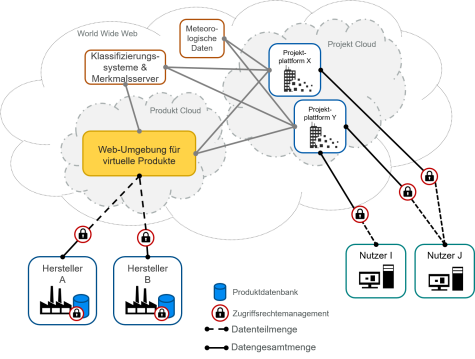With regard to the use of renewable energies, facades offer great potential. Due to the existing and commonly unused facade surfaces, conversion surfaces can be created by using multi-functional facade components, especially in heavily populated areas. However, the use of the multi-functional components with current BIM-methods is complex and expensive, which is why the usage of façade surfaces for energy generation in urban areas has not been able to prevail on a large scale so far. The reasons for the complexity of applying such components are numerous, but the main points to name are the strong need for cross-company and cross-disciplinary collaboration, the lack of existing or insufficiently supported digital product descriptions and the flood of information generated by such complex products. Although these challenges are particularly evident when considering multi-functional components, they generally affect the entire construction process.
Within the research project SCOPE (Semantic Construction Project Engineering) approaches that relate to the product and building life cycle are developed. At the center of these approaches stands an application-independent data management, which will facilitate collaboration between different project partners using different software applications. In order to achieve this, schematics for the description of product and project data as well as concepts for a decentralized data management (e. g. for a product catalogue) are developed. To ensure data security, said data will be provided with an access rights management system, and interfaces for secure data exchange are defined. To allow an easy integration of the product and building model into existing software, preprocessing routines are designed to reduce information and transform data. These should have a modular structure to allow a high re-usability and a wide field of application. The developed methods and concepts are implemented demonstratively and used in example projects. Findings on possibilities for improvement identified from these test runs will be taken into account in the course of the project within iterative steps for the further development of the methods.












